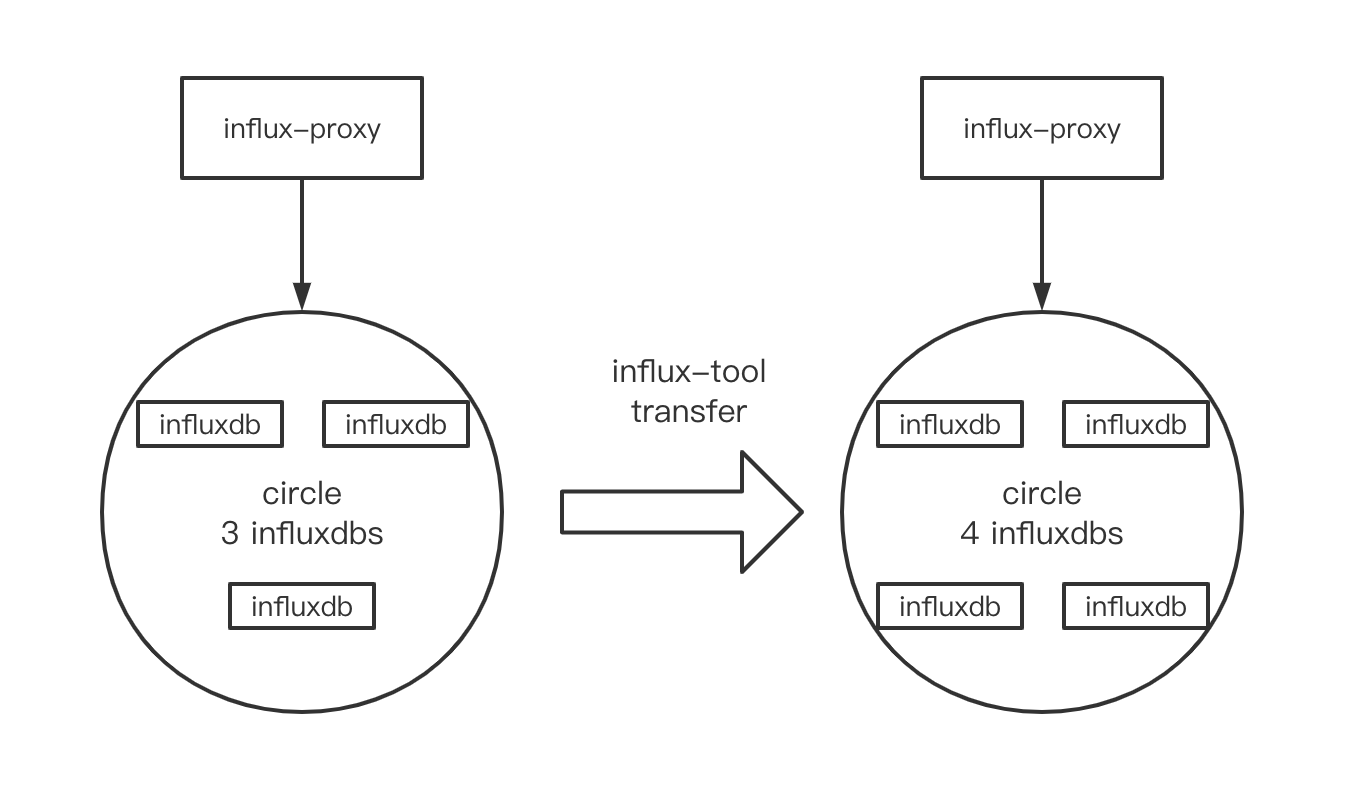



influx-tool - Influx Tool for InfluxDB and Influx Proxy
Usage
$ influx-tool --help
influx tool for influxdb and influx-proxy
Usage:
influx-tool [command]
Available Commands:
cleanup Cleanup measurements with regexp
compact Compact the all shards fully
help Help about any command
transfer Transfer influxdb persist data on disk from one to another
Flags:
-h, --help help for influx-tool
-v, --version version for influx-tool
Use "influx-tool [command] --help" for more information about a command
Cleanup
$ influx-tool cleanup --help
Cleanup measurements with regexp
Usage:
influx-tool cleanup [flags]
Flags:
-H, --host string host to connect to (default "127.0.0.1")
-P, --port int port to connect to (default 8086)
-d, --database string database to connect to the server (required)
-u, --username string username to connect to the server
-p, --password string password to connect to the server
-s, --ssl use https for requests
-r, --regexp string regular expression of measurements to clean (default "", all)
-m, --max-limit int max limit to show measurements (default 0, no limit)
-S, --show-num int measurement number to show when show measurements (default 10)
-D, --drop-num int measurement number to drop per worker (default 1)
-w, --worker int number of concurrent workers to cleanup (default 10)
-n, --progress int print progress after every <n> measurements cleanup (default 10)
-C, --cleanup confirm cleanup the measurements (be cautious before doing it)
-h, --help help for cleanup
Compact
$ influx-tool compact --help
Compact the all shards fully
Usage:
influx-tool compact [flags]
Flags:
-p, --path string path of shard to be compacted like /path/to/influxdb/data/db/rp (required)
-f, --force force compaction without prompting (default: false)
-w, --worker int number of concurrent workers to compact (default: 0, unlimited)
-h, --help help for compact
Transfer
$ influx-tool transfer --help
Transfer influxdb persist data on disk from one to another
Usage:
influx-tool transfer [flags]
Flags:
-s, --source-dir string source influxdb directory containing meta, data and wal (required)
-t, --target-dir string target influxdb directory containing meta, data and wal (required)
-d, --database string database name (required)
-r, --retention-policy string retention policy (default "autogen")
--duration duration retention policy duration (default: 0)
--shard-duration duration retention policy shard duration (default 168h0m0s)
-S, --start string start time to transfer (RFC3339 format, optional)
-E, --end string end time to transfer (RFC3339 format, optional)
-w, --worker int number of concurrent workers to transfer (default: 0, unlimited)
--skip-tsi skip building TSI index on disk (default: false)
-n, --node-total int total number of node in target circle (default 1)
-i, --node-index intset index of node in target circle delimited by comma, [0, node-total) (default: all)
-k, --hash-key string hash key for influx proxy, valid options are idx or exi (default "idx")
-h, --help help for transfer
If you are using Influx Proxy v2.4.7+, and you need to transfer InfluxDB data, such as scaling, rebalancing and recovering.
This command is high-performance and doesn't need to start InfluxDB, and it's a direct transformation of disk data.

If the original Influx Proxy cluster has 3 InfluxDB instances, corresponding to the following 3 data persistence directories
(the following directories are for reference only, and the actual directories shall prevail):
/data/source-1/influxdb
/data/source-2/influxdb
/data/source-3/influxdb
They need to be transferred to a new InfluxDB cluster. Assuming that one circle has 4 InfluxDB, the database name is db, the default retention policy is autogen,
all data need to be transferred,and we can use 8 worker threads, so the following commands should be executed:
./influx-tools transfer --source-dir /data/source-1/influxdb --target-dir /data/target/influxdb --database db --node-total 4 --worker 8
./influx-tools transfer --source-dir /data/source-2/influxdb --target-dir /data/target/influxdb --database db --node-total 4 --worker 8
./influx-tools transfer --source-dir /data/source-3/influxdb --target-dir /data/target/influxdb --database db --node-total 4 --worker 8
./influx-tools compact --path /data/target/influxdb-0/data/db/autogen --force --worker 8
./influx-tools compact --path /data/target/influxdb-1/data/db/autogen --force --worker 8
./influx-tools compact --path /data/target/influxdb-2/data/db/autogen --force --worker 8
./influx-tools compact --path /data/target/influxdb-3/data/db/autogen --force --worker 8
The first 3 commands transfer the old 3 InfluxDB data to the /data/target/influxdb directory, and generate the following 4 new influxdb data directories,
the order of which is the same as the order of backends in new proxy.json:
/data/target/influxdb-0
/data/target/influxdb-1
/data/target/influxdb-2
/data/target/influxdb-3
The last 4 commands are to compact and optimize the transferred data, such as the optimization of duplicate data and error data.
Of course, there will be no problems if they are not executed.
 Documentation
¶
Documentation
¶
 Directories
¶
Directories
¶



